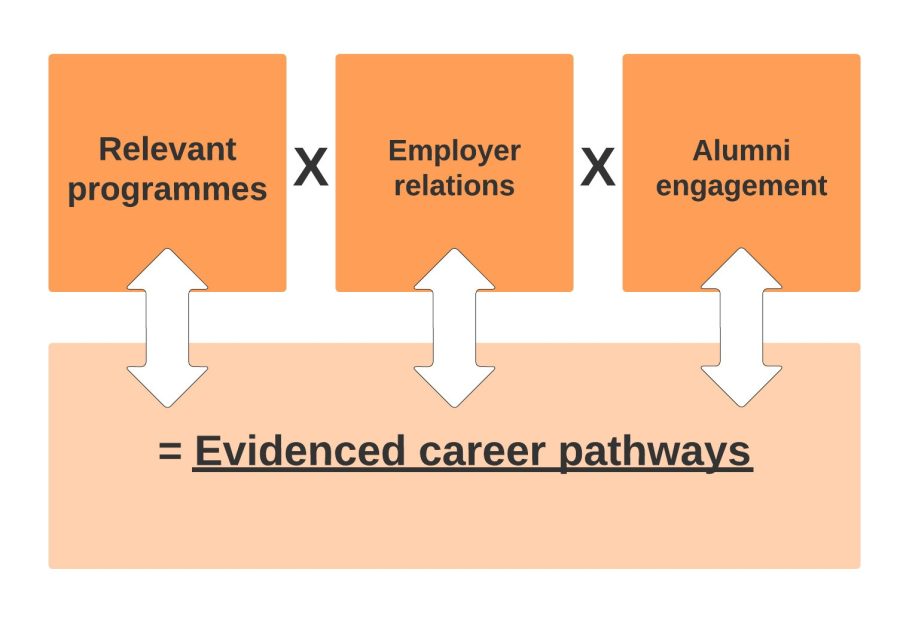When marketing internationally, universities outside the traditional elite must find ways to overcome their mid-ranked and low-ranked labels, and amplify their strengths. To be successful requires a playbook with style AND substance.
Top ranking?
Rankings – league tables of universities – can be a flawed indicator for international students making their most significant education choice. The Higher Education institutions (HEIs) which appear at, or near, the top of them, are undoubtedly the heavyweights of the sector. They have a world-leading research impact. Those students academically smart or fortunate enough to attend one of them traditionally enjoy advantages in the job market relative to graduates from lower-ranked alternatives. Attendance at one of the top tier universities is a quality signal for many employers, even when the degree subject studied has no direct relationship with the content of the job. And whilst much essential information about the student experience, value for money, or relative career success, is missing from some prominent ranking tables, students, and parents in many international source markets, find it hard to look beyond them.
From a university marketers’ perspective rankings are either a curse or a blessing, depending on where their HEI is ranked. It is an easier gig to promote Stanford University internationally than it is to promote the University of Staffordshire. Annual movements, upwards and downwards, within the middle of the table, can be significant from year to year. The universities of Chichester and Stirling are equal 53rd in the 2024 UK University rankings recently published by The Times. Last year they were 28 places apart at 66th and 38th respectively. Do such big changes evidence any real shifts in quality?
For those universities destined to languish in the crowded middle and lower base of the rankings pyramid, including the UK’s post-1992 universities – the former polytechnics – what’s the best approach to international marketing? How can international students be influenced to view post-1992 institutions from a different perspective, other than league position?
The international playbook
This is an international marketers’ opportunity that goes way beyond the promotion and marketing communications which are the mainstay of many university international teams and, instead, requires a fully transversal Marketing approach. Making a brand promise that is style over substance, or developing a great written value proposition for a specific part of programme portfolio lacks credibility unless there is a complete focus on delivering tangible benefits for international students.

1. Relevant programmes
Growth industries require an evolving skills base to serve the fast-changing needs of a global audience. Green technology, artificial intelligence (AI), robotics, cyber security, and personalised medicine are some topical examples that build on core departmental strengths found in some of the so-called lower ranked institutions. Businesses the world over require practical expertise in data analysis and digital marketing. Art and design, a subject which shines at many less storied UK universities, remains a desirable career path for many international students. Automotive engineering programmes are evolving to embrace the new technologies required to drive further growth in the global market for electronic vehicles.
The opportunity to build and amplify specialisms in the product portfolio – to stay relevant to industry and attract an international audience to a centre of excellence – is considerable.
Niche, super-focused providers meet the needs of growth industries such as hospitality and tourism – think Swiss-based hospitality schools – and the global sports industry – think the University Campus of Football Business (UCFB) and its Global Institute of Sport (GIS). However, broader-based universities have the additional advantage of being able to leverage a wider portfolio, featuring a range of programme strengths. Through a cross-disciplinary approach, post-1992 universities can borrow the expertise of other departments, close to the latest trends in cutting edge topics such as green tech or AI, and can differentiate their offering in mainstream, higher volume subjects such as business and management.
Researching industry and student demand in high potential source markets is fundamental to driving successful programme development for an international audience and focusing the senior leadership team on what their specific university is famous for, relative to its peers. The focus should be on quality and depth in a few internationally marketable subject areas, rather than trying to be everything to everyone, everywhere. University departments that may normally operate quite independently must be incentivised to collaborate where advantageous to students and the needs of international employers, rather than being allowed to operate in their traditional silos.
2. Employer relations
If relevant and market-leading programmes exist, especially in important specialisms, the motivation of companies and industries to identify and source international talent from an institution will increase. Making close connections with a small number of large-scale, global employers with a presence in target source markets, will create opportunities for graduates and alumni and iteratively inform future programme content. Such a strategy requires access to the connections of academics and the resourcing of dedicated roles that will seek out and engage with partner employers.
3. Alumni engagement
Investment in international alumni engagement is an afterthought in many universities. It is clear, that a strong network of international alumni, no matter how modest in scale at the outset, brings opportunities to build a meaningful brand position in target source markets. It enables engagement with industry and encourages word-of-mouth referrals of prospective new students. The alumni engagement team is a critical cog in the wheel of international market development and should be given a place at the top table of strategic decision-making.
4. Evidenced career pathways
It is not possible to understand international graduate outcomes and career paths without measuring them rigorously. Universities need to build an evidence base to show that they drive value for international students in the job market. Testimonials are an important part of the international marketing communications toolkit but validated data, tracked over time, informs the development of a sustainable international strategy because it shines a light on what is really happening with graduate careers.
Keeping it real
A recent report published by the Conversation examines the plight of international students in Australia. Its main argument is that whilst they can readily receive a long duration post-study visa to stay in the country, large numbers of them are struggling to find employment appropriate to their degrees. Many of them are working in low-skilled jobs, only half are in full-time employment, and a reduced number of temporary graduate visa holders – one third, down from two thirds in 2014 – are transitioning to permanent residency when their visa expires.
The article underlines the need to match promise with reality when it comes to the marketing claims of career outcomes for international students.
Lessons from domestic life
For the audience of domestic students, there are strong case studies to celebrate for rankings-challenged HEIs. Whilst the real-world outlook for post-study work opportunities in a study destination can change with the whims of the latest government policy, building on heritage and staying fully relevant to industry is a transferrable lesson when serving the international audience.
In a recent article for UK newspaper The Times, Emma Duncan wrote that it’s the post-1992 universities that are leading the way in the delivery of relevant, career-focused programmes to the right audiences. Nottingham Trent University is highlighted as a success story – its 40,000 students making it the UK’s fifth biggest university. Faculties such as computing are meeting the needs of students and employers in the region, since computer game design is one of the local region’s biggest industries. London South Bank University has also grown rapidly in size and, Duncan writes, ‘half of the courses it offers are accredited by professional bodies.’

The University of East London, is celebrating its 125th anniversary this year. Founded in 1898 as the West Ham Technical Institute, its mission from the start was to deliver education focused on the needs of industry. Success for such universities is not focused on rankings based on citations and academic research – the University of East London is currently ranked 131st (last place) by the Times. Its ethos is driven not by rankings, but by relevance to industry and job placements during and after a programme of study.
International strategy
Yes, most of today’s student beneficiaries from these close industry connections are domestic. Current UK Government policy unfortunately brings some constraints, as we covered in a previous post. But given the financial imperatives to recruit a cohort of international students with their higher fees, there are already the foundations of an authentic story to build on that can, with focus, resourcing, and expertise, be transferrable to international marketing strategy.
The pathways to relevant career opportunities must be real and they must be evidenced. Then universities in the squeezed-middle and wide-base of the rankings pyramid will have an opportunity to finally transcend the constraints of their nominal league position, in the source markets where many of them currently struggle, enabling them to flourish on the international stage.